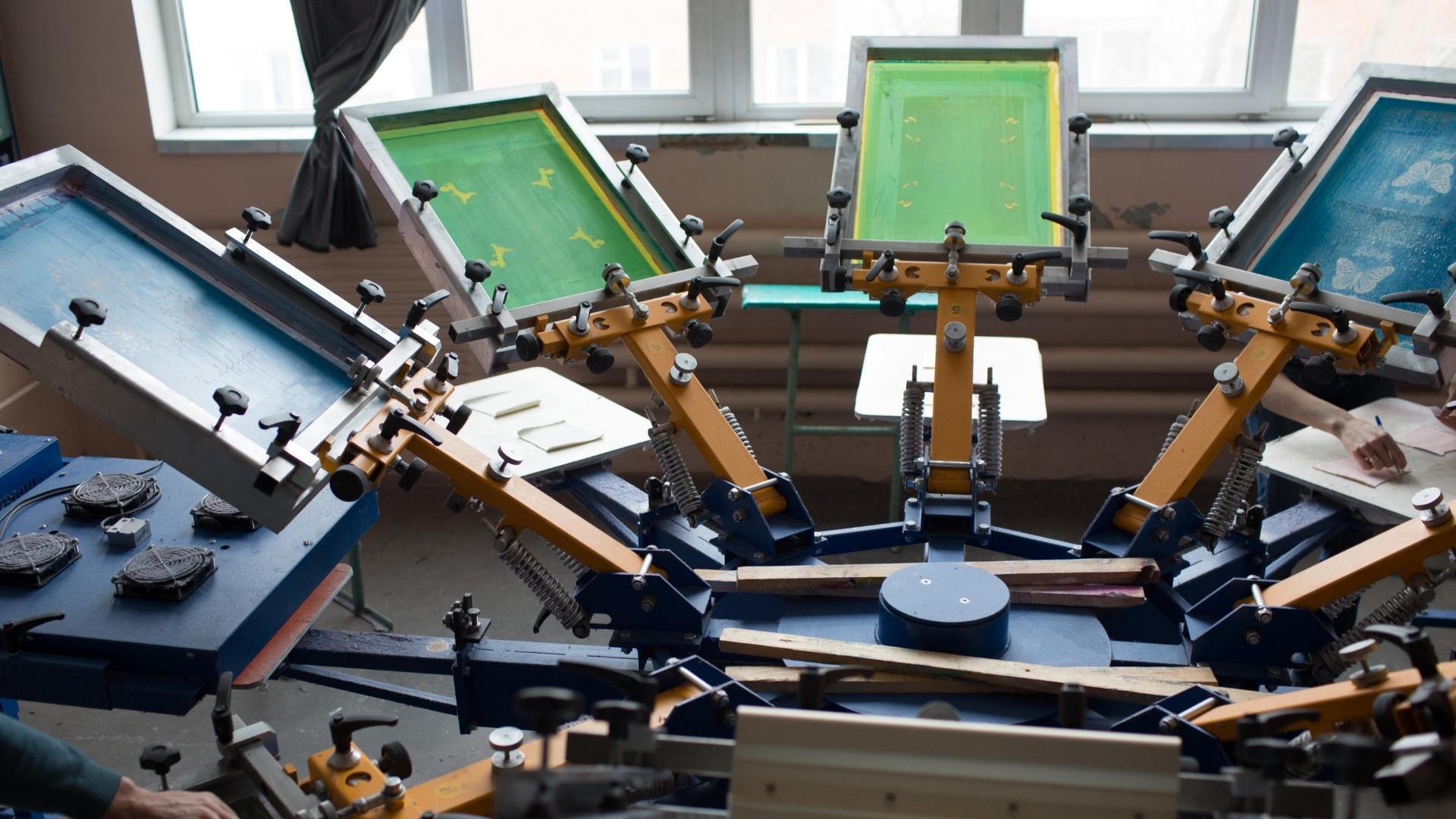The Crucial Guide to Recognizing Screen Printing and Its Versatile Uses
Screen printing has an abundant history that goes back to old times, evolving into an innovative technique made use of throughout numerous industries today. This guide checks out the details of the screen printing procedure, detailing its applications in home, marketing, and fashion design - 10:9 Design near me. Understanding these fundamentals can open innovative potential for both industrial and creative projects. The complying with sections will certainly reveal essential pointers and methods to improve one's screen printing endeavors
The History of Screen Printing
Although screen printing has roots that trace back centuries, its development shows the creative and technical developments of numerous societies. Coming from in ancient China, the technique was initially used for enhancing fabrics and later infect Japan, where it ended up being important to Ukiyo-e woodblock printing. The approach changed to Europe in the 18th century, where it acquired popularity among craftsmens and commercial printers. The development of image solution in the 20th century changed screen printing, enabling for more complex layouts and greater efficiency. Artists like Andy Warhol additionally propelled its appeal, utilizing the medium to produce iconic jobs that blended commercialism and fine art. By the late 20th century, screen printing had actually established itself as a flexible method, utilized in vogue, marketing, and art. Today, it continues to progress, incorporating electronic technology and increasing its applications throughout various industries.
The Screen Printing Process Explained
Screen printing changes imaginative visions into substantial designs through a collection of specific actions. A photo is developed and then moved onto a screen, usually made of great mesh textile stretched over a framework. A light-sensitive solution is put on the screen, which is exposed to light, setting in areas not covered by the image. After rinsing the unhardened emulsion, a pattern is developed.
Next off, the screen is put over the substratum, whether it be material, paper, or another product. Ink is then pressed through the open locations of the stencil using a squeegee, transferring the layout onto the substrate listed below. This procedure can be repeated for several colors, calling for different screens for each and every shade. Lastly, the published item is healed using heat to ensure the ink sticks properly, causing a resilient, vibrant style all set for use.
Kinds Of Screen Printing Techniques

In addition, specialty methods, such as discharge screen printing, get rid of dye from the textile to create softer prints, while aluminum foil screen printing applies metal foil to achieve a glossy coating (10:9 Design contact). Each strategy offers distinctive qualities, satisfying different creative demands and manufacturing ranges, ultimately expanding the opportunities within the screen printing domain name
Applications of Screen Printing in Various Industries

Additionally, the signage and advertising and marketing sectors use screen printing for creating attractive displays and banners. This method enables strong colors and intricate styles that capture focus. In electronics, screen printing is used for applying conductive inks to circuit boards, important for component connections. The home decoration industry welcomes screen printing to produce distinct designs on fabrics and wall surface art. In general, screen printing functions as a vital tool across diverse areas, improving products with customized and aesthetically attractive graphics.
Tips for Successful Screen Printing Projects
While taking on a screen printing project, cautious focus to information can substantially boost the last result. Initially, picking top quality materials is essential; this includes the screen, inks, and substratums. click here to read Using appropriate mesh matters can affect ink deposition and detail resolution. Preparation is just as essential; thorough cleaning of screens and correct direct exposure times ensure crisp prints.
Next, precise registration is essential for multi-color prints. Making use of placement tools can help attain accurate layering. Furthermore, screening prints on scrap products before manufacturing helps determine possible concerns without squandering sources.

Often Asked Questions
What Materials Are Best for Screen Printing on Fabric?
Cotton and polyester blends are suitable for screen printing on material due to their sturdiness and ink absorption. Furthermore, specialized textiles like silk or canvas can produce distinct appearances and surfaces, improving the total layout high quality.
Just how Do I Clean and Maintain Screen Printing Tools?
To clean up and keep screen printing equipment, one ought to regularly wash screens with proper solvents, check mops for wear, lubricate moving components, and shop all items in a dry, dust-free setting to extend their life-span.
What Are the Ecological Impacts of Screen Printing?
Screen printing can have substantial ecological influences, including chemical waste from solvents and inks, water usage throughout cleaning procedures, and power intake. Environment-friendly products and sustainable methods are vital for lessening these unfavorable results.
Can Screen Printing Be Done at Home Effectively?
Screen printing can be effectively done at home with the appropriate products and techniques. Hobbyists can produce top quality prints, though success depends upon their skill degree, equipment, and understanding of the process entailed.
What Are the Costs Linked With Starting a Display Printing Company?

Beginning a screen printing organization involves expenses for equipment, materials, and work area. Initial expenses typically vary from a couple of hundred to several thousand dollars, relying on the scale, quality of machinery, and preferred production capacity.
Screen printing has an abundant background that dates back to old times, evolving into an advanced strategy utilized across different industries today. One more technique, rotary screen printing, uses cylindrical displays, promoting continual printing on material rolls, consequently boosting important site performance for large manufacturings. Additionally, specialized methods, such as discharge screen printing, get rid of dye from the textile to develop softer prints, while foil screen printing applies metallic foil to attain a glossy surface. In the fashion sector, screen printing is widely utilized to produce lively styles on garments, making it possible for brand names to showcase their custom printed aluminum signs special designs. Cotton and polyester blends are ideal for screen printing on textile due to their toughness and ink absorption.